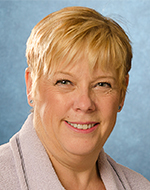Page Content
 While scholars debate where “first do no harm” originated, most people associate it with the medical profession. But what happens when medical professionals do one thing to “first do no harm” that has ramifications far beyond what they could ever have predicted? Such is the case with fentanyl.
While scholars debate where “first do no harm” originated, most people associate it with the medical profession. But what happens when medical professionals do one thing to “first do no harm” that has ramifications far beyond what they could ever have predicted? Such is the case with fentanyl.
In the last decade OxyContin became the drug of choice for many, and the effects of this drug were horrific. There was widespread abuse and addiction, and many users turned to crime to feed their habit. OxyContin was originally designed to be a slow-release pain relief tablet, but users quickly found that if they crushed the tablet, the effects were immediate and the rush that users experienced was very similar to heroin. But heroin has a reputation for being a street drug, whereas OxyContin is available by prescription, so many users figured it was safer. But the public outcry around the abuse of OxyContin continued and eventually the pharmaceutical companies listened, partly because pharmacies were regularly being robbed, even when they posted signs claiming they had no OxyContin on site. In March 2012 OxyContin was pulled from pharmacy shelves. The crushable pill was replaced by a tamper-proof painkiller called OxyNeo, designed specifically to discourage misuse.
But here is where the unintended consequences come in. There was no plan in place to ramp up treatment for those addicted to OxyContin, leaving dealers with a large and lucrative pool of people who desperately needed something. And so the current crisis was born.
In 2011 there were six fentanyl deaths in Alberta; in 2012 there were 29; in 2013 the number rose to 66, and then 213 in 2014. In the first six months of 2015 there were already 145 deaths, with police predicting the number could reach 300 by year’s end.
But why so many deaths? Fentanyl is the most potent opioid available by prescription, but that’s not what is on the streets. Instead “green beans,” “shady eighties” or “fake oxy,” as it is known, is made in backroom labs with no controls over dosage or contents. Real fentanyl can be lethal in very small amounts; an overdose shuts off oxygen to the brain and heart, killing the user in minutes. With backroom fentanyl, users have no idea what they are actually taking. And, according to police, the drug is now as easy to get as pot.
There is a need for a shift in how we think about drug use and abuse in Alberta. From the controversies surrounding safe injection sites to providing free methadone to opiate abusers, there is a long-held belief that addiction is a character flaw or a choice. We still tend to think of it as a criminal matter rather than a health matter.
Health officials know that naloxone reverses the effects of opioid overdoses and saves lives. It’s an injection that revives users when fentanyl cuts off oxygen to the brain and heart, allowing them to live. Until just recently, naloxone was only available in emergency rooms and for use by paramedics, but health officials have been recommending that naloxone be put into the hands of users, their friends and their families.
Thankfully, the government has responded, with Alberta Health announcing Feb. 17 that pharmacies across the province are now providing take-home naloxone kits free of charge to Albertans with a prescription.
So far, almost 300 pharmacies have signed on to provide take-home naloxone kits and train people to use them safely, Alberta Health says. About 1,100 Alberta pharmacies are eligible to participate in this voluntary program.
In other provinces where the antidote has been widely available, deaths caused by fentanyl overdose are decreasing, whereas in Alberta they are increasing. It’s applaudable that the province is rethinking its drug policy. Hopefully, pharmacies across the province take up this program, so that the next overdose doesn’t have to end in tragedy. ❚
Shelley Magnusson is responsible for the Association’s Healthy Minds, Bright Futures program, a partnership with the Canadian Mental Health Association and Global TV to promote positive mental health for students.
